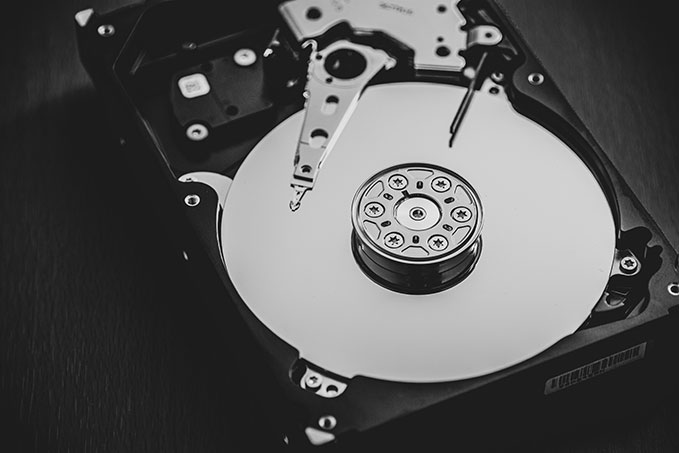How Robust Data Destruction Improves Your Overall Cyber Security Steps
How Robust Data Destruction Improves Your Overall Cyber Security Steps
Blog Article
How Proper Information Damage Contributes to Robust Computer System Safety And Security Solutions and Mitigates Dangers of Information Breaches
In today's digital landscape, the significance of appropriate data destruction can not be overstated, as it works as a basic component of thorough computer security services. By executing effective information erasure strategies, companies not just secure delicate information from unapproved accessibility yet also bolster their conformity with regulative structures - data destruction. The implications of inadequate information destruction extend past mere compliance; they can greatly influence a company's cybersecurity posture and reputation. Understanding these dimensions elevates critical concerns about the techniques in position and their performance in an age of rising cyber hazards.
Relevance of Data Destruction
In today's electronic landscape, the significance of information destruction can not be overstated. As organizations increasingly rely upon digital properties, the possible dangers related to information violations and unauthorized access amplify. Reliable data damage is an essential part of an extensive details security approach, securing delicate information from falling right into the hands of malicious actors.
When information is no much longer required, merely erasing data or formatting hard disk drives is inadequate. Residual information can often be recuperated utilizing easily available devices, posturing substantial risks to both people and companies. This underscores the requirement for robust information damage practices that make sure all information is irretrievably eliminated.
In addition, governing conformity requireds, such as GDPR and HIPAA, stress the obligation to secure sensitive information, including its correct disposal. Non-compliance can bring about severe economic charges and lawful repercussions. data destruction. Hence, integrating reliable information destruction procedures not just enhances security yet likewise fortifies a company's track record and reliability

Techniques of Secure Information Erasure
Numerous effective techniques of secure data erasure can be used to make sure that delicate information is permanently gotten rid of from storage gadgets. One commonly identified strategy is information overwriting, which includes changing existing information with arbitrary patterns multiple times. This technique significantly minimizes the opportunities of data recuperation, although it may not work versus advanced forensic techniques.

Physical damage is likewise a trustworthy method, where storage gadgets are made unusable via shredding, crushing, or incineration. This technique makes sure that information can not be recovered by any means yet requires mindful handling of hazardous materials.
Finally, specialized software program tools developed for safe and secure data erasure provide performances that abide with various erasure requirements. These devices usually consist of features like confirmation processes to validate effective data devastation.
Utilizing these methods in mix can improve data safety and alleviate the threats related to data breaches, ensuring that delicate details is not unintentionally revealed.
Legal and Conformity Considerations
The methods used for protected information erasure not only offer to secure sensitive information yet additionally needs to line up with lawful and conformity structures controling information defense. Organizations are needed to follow various laws, such as the General Data Defense Policy (GDPR), the Wellness Insurance Coverage Portability and Accountability Act (HIPAA), and the Payment Card Market Information Security Criterion (PCI DSS) These regulations mandate specific methods for information taking care of and destruction, ensuring that sensitive and individual information is irretrievably eliminated when no more needed.
Failing to abide by these lawful requirements can result in significant charges, including fines and reputational damages. Furthermore, organizations must preserve documents of information destruction procedures, showing compliance during audits or investigations. This documentation not just secures against lawful repercussions however likewise strengthens depend on with consumers and stakeholders, showcasing a commitment to information safety.
Integrating legal and compliance considerations into data destruction practices is crucial for any type of company. It minimizes the threat of data violations and highlights an aggressive their explanation strategy to guarding delicate details, inevitably promoting a culture of protection and accountability across the organization.
Influence On Cybersecurity Position
Reliable data damage significantly boosts an organization's cybersecurity pose by decreasing the prospective strike surface for cyber risks. When sensitive data is not effectively like it damaged, it stays available to harmful actors who can exploit this details for unapproved access, identification burglary, or business espionage. By implementing robust data damage protocols, organizations can successfully decrease the threat of data breaches and improve their total security framework.
Moreover, the safe disposal of outdated or unnecessary information not just protects delicate information however also assists organizations comply with market regulations and requirements. Failure to properly damage data can cause severe legal effects and reputational damage, additional compromising a company's cybersecurity position.

Inevitably, focusing on reliable data destruction is essential for cultivating a durable cybersecurity posture, ensuring that companies remain vigilant against progressing cyber threats while securing their essential properties and stakeholders.
Ideal Practices for Organizations
Executing finest techniques for information devastation is essential for organizations intending to safeguard sensitive information and alleviate cybersecurity dangers. Companies need to develop an extensive data destruction policy that outlines responsibilities and procedures. This plan needs to adhere to appropriate laws, such as GDPR or HIPAA, making sure legal consistency.
Secondly, it is essential to make use of authorized information sanitization methods, including data wiping, degaussing, and physical destruction, customized to the sort of information and storage space tool. Utilizing certified specialists for information destruction services improves the reliability of these approaches.
In addition, organizations ought to preserve a thorough stock of all data storage space gadgets, making sure that all obsolete or changed equipment undergoes devastation. Regular audits of data damage methods can aid boost and identify weak points conformity.
Staff member training is one more crucial element, as staff needs to comprehend the relevance of information devastation and follow developed procedures. check it out Ultimately, companies should document all information devastation activities to give responsibility and traceability, which can be important during audits or in the occasion of a breach.
Verdict

One widely identified strategy is data overwriting, which includes changing existing data with random patterns numerous times.The methods used for safe and secure data erasure not just serve to shield sensitive details but also has to line up with lawful and conformity frameworks controling information security. These guidelines mandate specific methods for data managing and devastation, ensuring that sensitive and personal data is irretrievably removed when no longer required.
By applying durable information devastation protocols, organizations can properly decrease the risk of data violations and enhance their general security structure.
In verdict, proper information destruction is essential for boosting computer safety services and minimizing the risks associated with information violations. - data destruction
Report this page